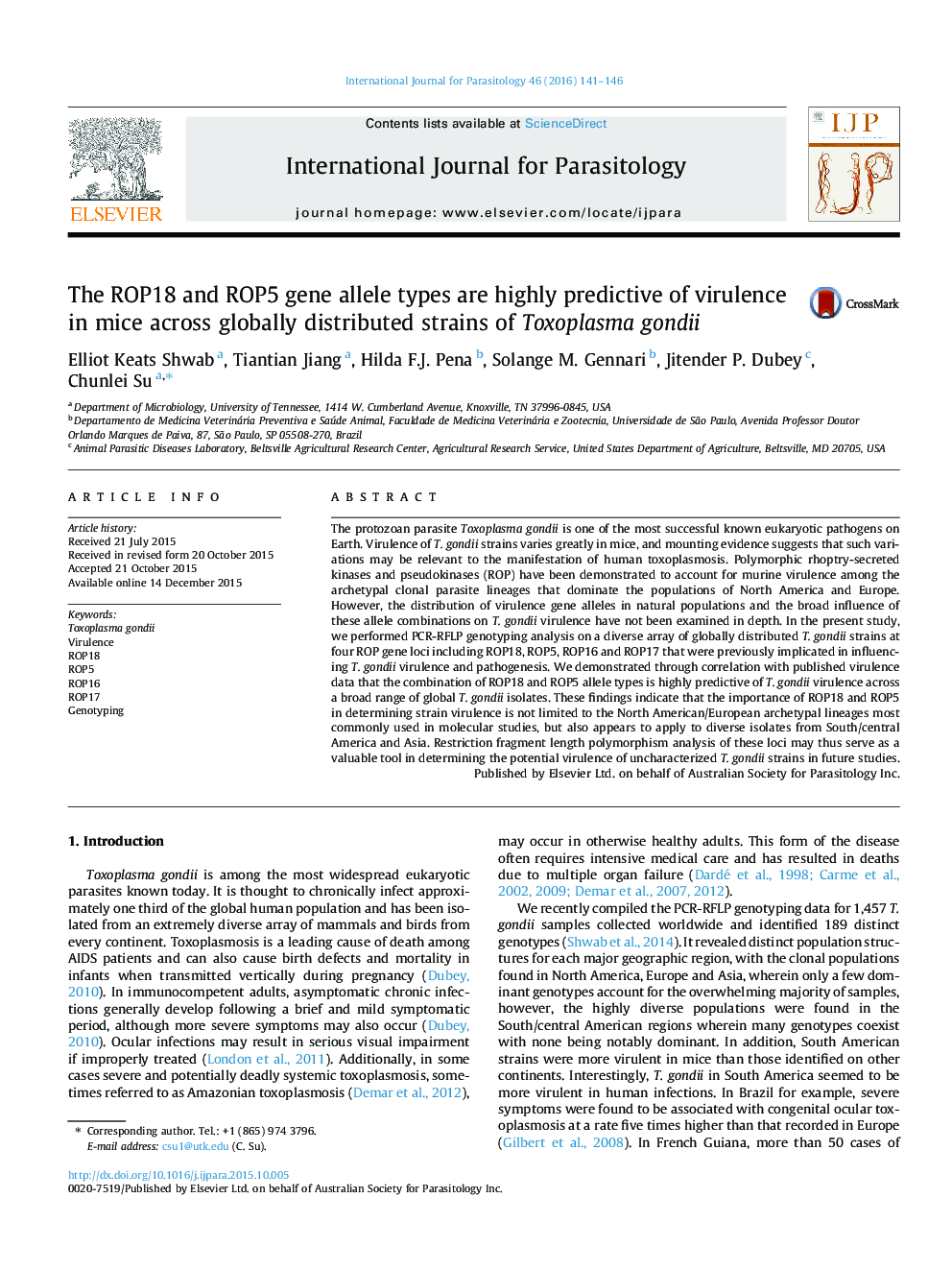| Article ID | Journal | Published Year | Pages | File Type |
|---|---|---|---|---|
| 2435968 | International Journal for Parasitology | 2016 | 6 Pages |
•A diversity of alleles for the rhoptry protein encoding genes ROP18, ROP5, ROP16 and ROP17 exist.•RFLP genotyping can readily be used to distinguish allele types among these genes.•Alleles of the ROP18 and ROP5 loci correlate strongly with the virulence of Toxoplasma gondii strains.•RFLP typing of ROP18 and ROP5 loci may be used to identify potentially virulent strains.
The protozoan parasite Toxoplasma gondii is one of the most successful known eukaryotic pathogens on Earth. Virulence of T. gondii strains varies greatly in mice, and mounting evidence suggests that such variations may be relevant to the manifestation of human toxoplasmosis. Polymorphic rhoptry-secreted kinases and pseudokinases (ROP) have been demonstrated to account for murine virulence among the archetypal clonal parasite lineages that dominate the populations of North America and Europe. However, the distribution of virulence gene alleles in natural populations and the broad influence of these allele combinations on T. gondii virulence have not been examined in depth. In the present study, we performed PCR-RFLP genotyping analysis on a diverse array of globally distributed T. gondii strains at four ROP gene loci including ROP18, ROP5, ROP16 and ROP17 that were previously implicated in influencing T. gondii virulence and pathogenesis. We demonstrated through correlation with published virulence data that the combination of ROP18 and ROP5 allele types is highly predictive of T. gondii virulence across a broad range of global T. gondii isolates. These findings indicate that the importance of ROP18 and ROP5 in determining strain virulence is not limited to the North American/European archetypal lineages most commonly used in molecular studies, but also appears to apply to diverse isolates from South/central America and Asia. Restriction fragment length polymorphism analysis of these loci may thus serve as a valuable tool in determining the potential virulence of uncharacterized T. gondii strains in future studies.
Graphical abstractFigure optionsDownload full-size imageDownload high-quality image (105 K)Download as PowerPoint slide
